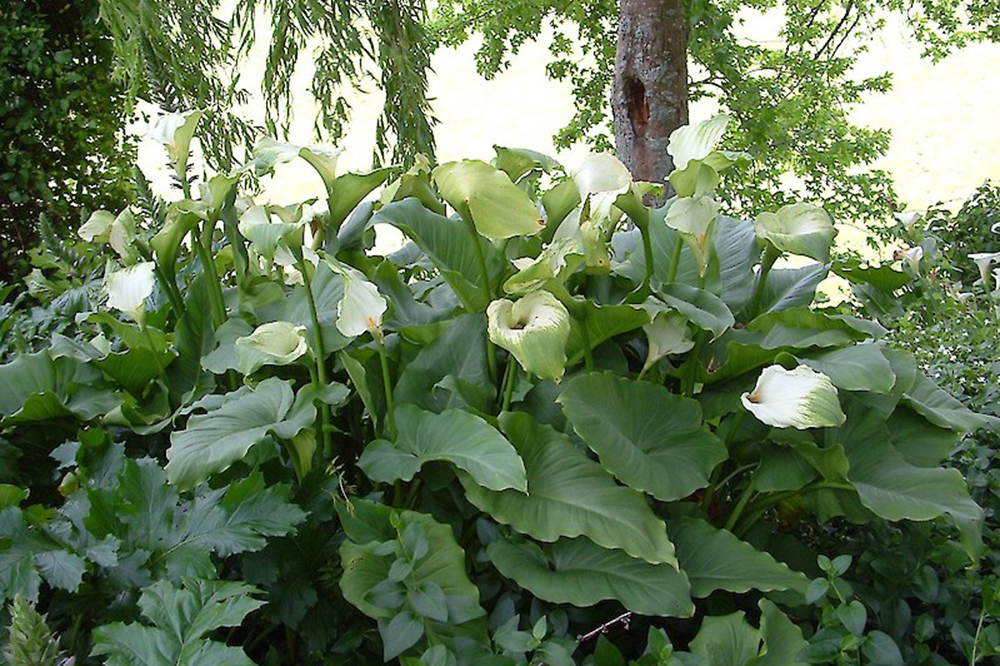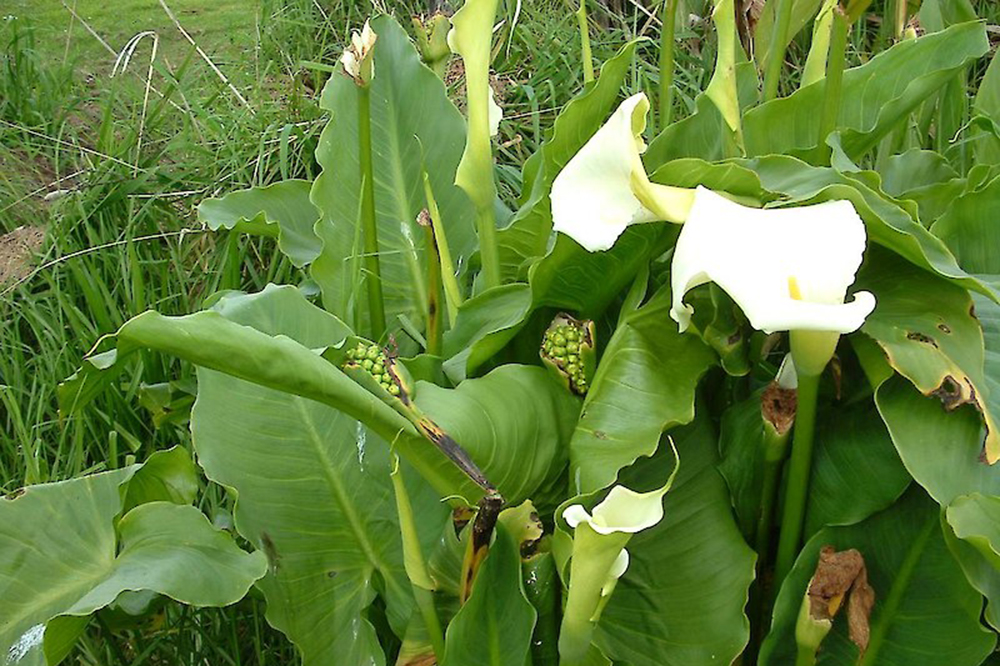Story
Arum lily: How to control it
By Sara Brill, Biosecurity Specialist – Pest Plant Partnerships at Northland Regional Council
Last month, I had the pleasure of meeting so many keen ‘weed busters’ at our recent Weeds Workshops. The free workshops are held across the region each year – this year we were in Kaitaia, Waimamaku, Kerikeri, and Whangārei.
Having worked in Biosecurity for several years, my eyes are drawn to notice pest plants when I’m out and about (which can be both a blessing and a curse). On my recent travels across the region, one of the most common weeds I spotted was the arum lily (Zantedeschia aethiopica).
Originally from South Africa, arum lily was introduced to New Zealand by early settlers as an ornamental garden plant. It was also a popular choice for funeral arrangements, earning it the alternative name ‘death lily’. Nowadays, the only funeral this nasty will be at is that of our native species.
Arum lily threatens native species as they form dense cover on the ground, shading out native plants and preventing them from establishing.
It is usually found in wet or damp areas, such as hollows in low lying paddocks and urban drains. However, it tolerates a range of conditions and can even survive during drought conditions once established.

Arum lily clump. (Photo: Weedbusters).
Paddocks where arum lily is not controlled can quickly lose grazing as stock do not like to graze on them.
How to identify it:
Arum lily is a long-lived, clump-forming, evergreen perennial that can grow up to 1.5 metres tall. It has large arrow shaped leaves that are glossy, leathery, and dark green.
From September to December, yellow finger-like spikes appear. These spikes are surrounded by greenish-white leaves that look like flowers. After the flower-like leaves die back, green berries (which will eventually turn yellow or orange) will be left on the much thicker seed pod.

Arum lily with green berries. (Photo: Weedbusters).
How to control it:
Because arum lily has an underground tuber system that can be difficult to remove by hand, herbicide could be your best bet. Here’s how:
- Cut and paint stumps with 1g metsulfuron-methyl per 1L water. Mulch the leaves and dispose of seeds at a refuse transfer station. Weed wipe leaves with the same herbicide mix.
- Alternatively, spray leaves with 5g metsulfuron-methyl + penetrant per 10L water.
When using herbicide please read the label thoroughly and ensure all instructions and safety requirements are followed.
If you choose to tackle arum lily by hand, make sure you remove all pieces of root as small tubers can break off and a new plant will grow. Leaves can be composted on site, but make sure to dispose of tubers at a waste transfer station (contact your local district council for more information).
For more information on arum lily and other pest plants, contact Northland Regional Council on 0800 002 004 and ask to speak to a biosecurity officer, or visit www.nrc.govt.nz/pestcontrolhub
